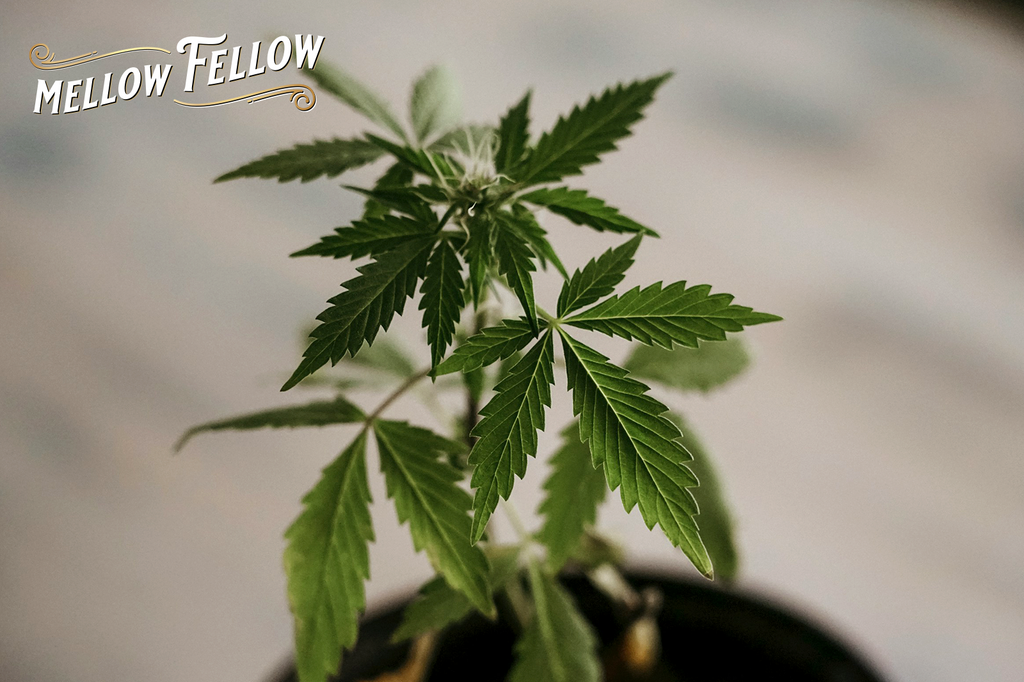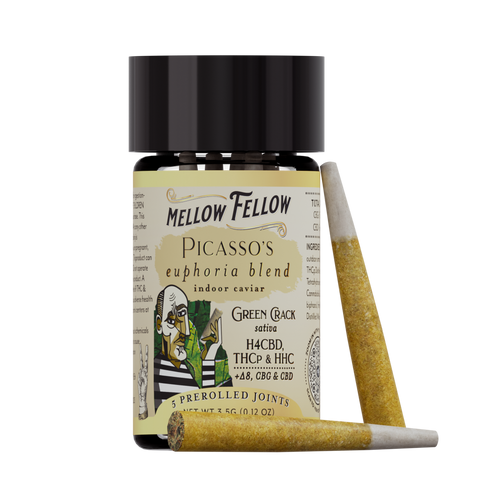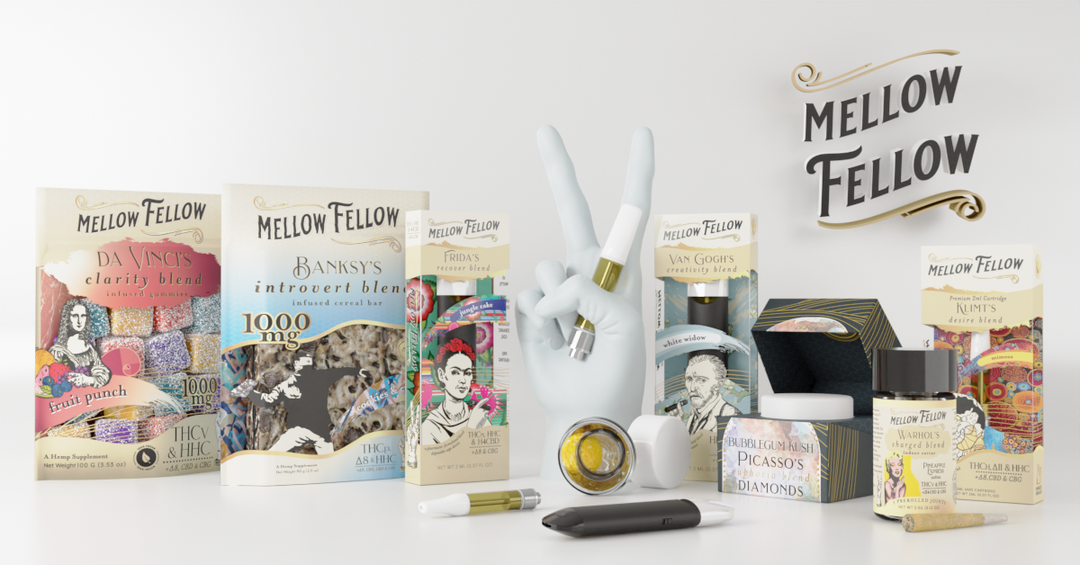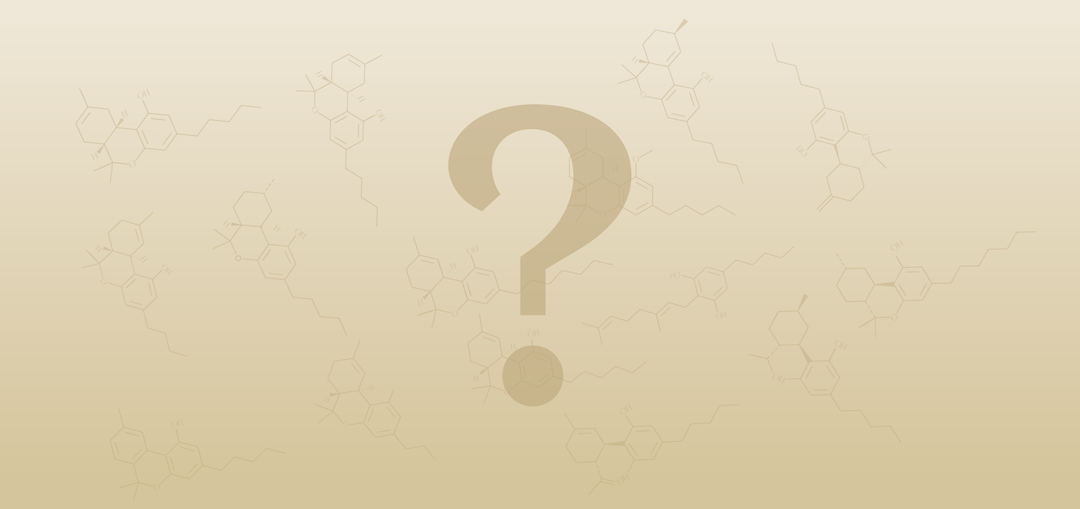THCjd vs. THCp

As science unravels the mysteries of cannabis, this revolutionary plant only keeps unfolding its complex tapestry of cannabinoids, delivering more and more new compounds that continue to amaze the scientific community.
Among all these compounds, THCjd and THCp emerge as two intriguingly rare and relatively novel players that capture attention with their distinct characteristics, separating them from other cannabinoids and their unique sets of potential applications in both recreational and medicinal spheres.
So, join us as we closely explore the features, effects, and potential benefits of THCjd and THCp and examine how these two new compounds are redefining the cannabis scene.
Key Takeaways
- Understanding these cannabinoids is pivotal for users seeking a nuanced cannabis experience, whether for recreation or potential therapeutic benefits.
- THCp, or tetrahydrocannabiphorol, has gained notoriety for its potency. Discovered more recently, its chemical structure sets it apart, making it potentially more potent than traditional THC.
- As for THCjd, the situation becomes interesting; Both experts and THCjd users report an above-and-beyond high with marked psychoactive effects and mild potential for hallucinations, providing an experience comparable to that of psilocybin mushrooms.
- While both are generally considered legal under federal law when derived from industrial hemp, regional regulations surrounding these and other potentially psychoactive hemp-derived cannabinoids may vary.
Overview of THCjd and THCp
The cannabinoids realm expands way beyond the famous THC and CBD, introducing lesser-known compounds like THCjd and THCp.
Officially known as THC-octyl, this relatively rare cannabinoid, emerged through cannabis research, somehow acquiring the nickname "THCjd" along the way.
Its properties and effects are still being unraveled, but early findings suggest it could play a unique role in the cannabinoid landscape.
On the other hand, THCp, or tetrahydrocannabiphorol, has gained notoriety for its potency. Discovered more recently, its chemical structure sets it apart, making it potentially more potent than traditional THC.
THCp vs. THCjd: Effects and Potency Comparison

Both THCp and THCjd fall into the category of rare cannabinoids, with THCjd being the rarer of the two. Each of these cannabinoids has its unique characteristics.
Although most of the research on these new cannabinoids is still in its early stages, the available information suggests that both THCp and THCjd have unique properties that clearly distinguish them from traditional Delta 9 THC.
On its part, THCp considered one of the most potent cannabinoids discovered so far, has a 33 times greater affinity for binding to endocannabinoid receptors than regular THC, translating into 10 to 15 times greater potency compared to regular Delta 9.
As for THCjd, the situation becomes interesting; both experts and THCjd users report an above-and-beyond high with marked psychoactive effects and mild potential for hallucinations, providing an experience comparable to that of psilocybin mushrooms.
The unique chemical structures of THCjd and THCp contribute to their distinct effects on the body and mind, with THCjd often considered a bit more potent.
Chemical Structure
Comparing the chemical structures of THCjd and THCp sheds insights into their potency and effects.
Both structures are quite similar, having only one carbon molecule difference. THCp extends the pentyl chain of regular THC, converting it to heptyl, which means that THCp has 7 carbon molecules instead of 5.
This seemingly slight difference has an enormous impact on the effects of THCp, giving it 33 times more affinity to CB1 receptors and a psychoactive potency up to 15 times greater than that of Delta 9 THC.
On the other side of the spectrum, THCjd, also called tetrahydrocannabioctyl, lengthens the side chain with one more carbon molecule than THCp, going from heptyl to octyl and generating a potency up to 19 times greater than that of traditional THC.
We must note that, beyond structure, the consumption method directly influences how long the THCjd or THCp's effects will last and how potent they will be. Inhalation typically results in quicker yet milder effects, while edibles may yield a prolonged and deeper experience.
As the scientific community delves deeper, understanding the particular properties of each structure becomes crucial for tailoring cannabinoid experiences more accurately.
Potential Applications and Consumer Interest
THCp and THCjd are carving out roles in emerging cannabis products. The potential applications span from medicinal to recreational, with experts considering THCp particularly effective, potentially surpassing the psychoactive potency of regular THC.
THCjd, on its part, promises great potential for recreational use, opening the door to a new dimension of sensory enjoyment with cannabis.
Legal and Safety Considerations: Navigating THCjd vs. THCp Use
While both are generally considered legal under federal law when derived from industrial hemp, regional regulations surrounding these and other potentially psychoactive hemp-derived cannabinoids may vary.
The Legal Landscape of THCjd vs. THCp
The legal status of THCjd, much like THCp, remains uncertain due to its novelty and the fact that it remains in a legal gray area since federal regulations do not specifically address them. While federal law generally permits their use when derived from industrial hemp, local regulations may differ across regions.
Some states have taken specific regulatory measures for alternative psychoactive cannabinoids derived from hemp, such as Delta 8, Delta 10, HHC, THCjd, and THCp.
The evolving nature of the cannabinoid legal landscape opens avenues for exploration, emphasizing the need for awareness and being up to date with regional laws.
Safety and Responsible Use
The milestone of safe and responsible THCjd and THCp use is choosing proven quality products from trusted sources. The good news is that if you are looking for a truly enjoyable, different, and, above all, safe THCp experience, Mellow Fellow has you covered!
Our diverse THCp catalog, including our Euphoria Blend Miami 1ml Live Resin Disposables or our Picasso's Euphoria Blend Prerolls, among many more, are a mere reflection of our commitment to quality.
Usage guidelines may vary depending on the product we choose. But, regardless of the product type you choose, or even whether you choose THCjd or THCp, there are some general guidelines you can take to ensure a safe and enjoyable experience. Here we leave you some useful tips:
- Source wisely: As we said, choose reputable brands like Mellow Fellow for quality THCp and THCjd products.
- Start low, go slow: Begin with a low dosage and gradually increase to gauge individual tolerance.
- Know your limits: Be aware of personal thresholds to prevent overconsumption and adverse effects.
- Stay informed: Keep abreast of legal and safety guidelines in your region.
- Mind your method: Consider the consumption method's impact on the duration and intensity of effects and try to align it with the outcome you want.
- Prioritize quality: Opt for products tested for purity and potency.
- Mindful mixing: Avoid combining with other substances for a more controlled experience.
Final Thoughts
In the ongoing evolution of cannabinoid research, THCjd and THCp stand as exciting frontiers, each with unique properties and potential applications, offering glimpses into the potential of the cannabis plant.
As research continues to unfold, THCjd and THCp roles in both recreational and medicinal contexts become clearer. The evolving nature of cannabinoid research keeps promising exciting future developments, offering a deeper understanding of these compounds and their impact on our well-being.
As we continue our cannabis journey, staying informed remains our compass, guiding us through the fascinating and ever-expanding cannabinoid universe.
Frequently Asked Questions
What is THCjd?
THCjd, or tetrahydrocannabioctyl, is a lesser-known cannabinoid with properties similar to THC but more potent and with psychedelic potential. Its full effects are still under exploration, but early research suggests potential analgesic and anti-inflammatory properties.
Which is Stronger THCp or THCjd?
THCjd is said to be 19 times more potent than regular Delta 9 THC, while THCp is only 15 times more potent.
Is THCjd Psychoactive?
Limited research suggests THCjd may have heightened psychoactive effects, providing a similar experience to that of magic mushrooms, but its full psychoactivity remains under study.
Is THCjd Stronger than Delta 9?
Yes. THCjd's strength compared to Delta 9 THC is still being researched, but early indications suggest THCjd may have 19 times more potency and unique properties that set it apart.
How Do THCjd and THCp Compare to THC?
THCjd and THCp, both rare cannabinoids, may have distinct effects compared to THC but are still closely related. Both THCjd and THCp offer a greater potency compared to Delta 9, potentially offering different experiences and therapeutic benefits.
How Do THCjd and THCp Interact with Other Medications?
The interaction of THCjd and THCp with other medications is not well-established, and caution is advised. Users should consult with healthcare professionals before consuming THCjd or THCp to get personalized advice based on their specific health conditions and medications.
Share on Social









Leave a comment